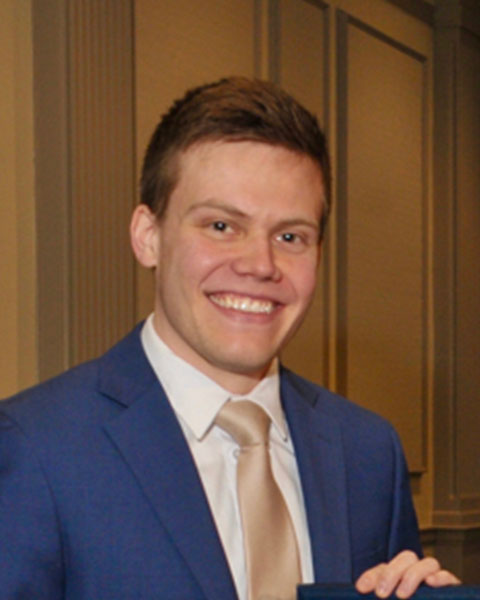Adult Depression
(PS2-C60) Greater Engagement, Greater Joy: An Experiment Testing a Core Premise of Behavioral Activation
Friday, November 17, 2023
10:00 AM - 11:00 AM PST
Location: Regency Ballroom, Level 7
- KF
Kaitlynn Fravel, B.A.
Post-Baccalaureate Researcher
Skidmore College
Saratoga Springs, New York 
Lucas S. LaFreniere, Ph.D. (he/him/his)
Assistant Professor
Skidmore College
Saratoga Springs, New York
Author(s)
Behavioral Activation (BA) treats Major Depressive Disorder (MDD) by monitoring and scheduling client engagement in activities associated with pleasure and/or a sense of accomplishment (“mastery”; Martell, Dimidjian, & Herman-Dunn, 2021). Much research has shown BA to be an efficacious treatment for MDD (see meta-analysis; Ekers et al., 2014). BA’s rationale theorizes that active activities with participatory engagement lead to more pleasure and mastery than passive, non-participatory activities (Martell et al., 2021). Thus, more active activities are thought to result in greater positive reinforcement and motivational enhancement to counter depression (Kanter et al., 2011). However, these assumed differences between active and passive activities have never actually been directly examined under controlled conditions. Accordingly, we aimed to study the differential benefits of active versus passive activities with an experimental design.
Participants were randomly assigned to either an active art creating condition or a passive art viewing condition for 15 minutes each (preliminary n = 67 with data collection still ongoing). Participants took a series of validated self-report questionnaires on BA outcome constructs both before and after their condition (The Post-Experimental Motivation Inventory, The Vitality Scale, and The PANAS-X Self-Assurance scale), as well as the Beck Depression Inventory II (BDI-II). They also rated post-activity pleasure and mastery in classic BA fashion. In the active condition, participants were directed to paint with watercolor paint. In the passive condition, they were directed to view watercolor paintings selected from the Splash “best watercolor of 2020” publication (paintings with human faces were excluded to rule out emotional reciprocity and sociality). Simple art experiences were chosen because they can address similar content with an active and passive approach without required training or skill. Preliminary analyses used longitudinal multilevel modeling and independent samples t-tests to examine differences in outcome change and level between conditions.
As hypothesized, the active condition led to greater reported pleasure (t(65) = -3.04, p = .003), mastery (t(65) = -2.37, p = .021), and motivation (t(65) = -2.91, p = .005) than the passive condition. The active condition also led to significantly greater increases in vitality (t(65) = -2.86, p = .006) and self-assurance (i.e., confidence and empowerment; t(65) = -2.35, p = .022) from pre- to post-activity. These same effects were significant when examined within a subsample of MDD analogues alone (passing the BDI-II’s clinical cutoff score). According to this experiment, the proposal of BA theory that active activities generate greater positive emotion, sense of accomplishment, and motivation appear to be supported: Greater active engagement, greater joy. A notably larger sample size will be available by the time of ABCT 2023.
Participants were randomly assigned to either an active art creating condition or a passive art viewing condition for 15 minutes each (preliminary n = 67 with data collection still ongoing). Participants took a series of validated self-report questionnaires on BA outcome constructs both before and after their condition (The Post-Experimental Motivation Inventory, The Vitality Scale, and The PANAS-X Self-Assurance scale), as well as the Beck Depression Inventory II (BDI-II). They also rated post-activity pleasure and mastery in classic BA fashion. In the active condition, participants were directed to paint with watercolor paint. In the passive condition, they were directed to view watercolor paintings selected from the Splash “best watercolor of 2020” publication (paintings with human faces were excluded to rule out emotional reciprocity and sociality). Simple art experiences were chosen because they can address similar content with an active and passive approach without required training or skill. Preliminary analyses used longitudinal multilevel modeling and independent samples t-tests to examine differences in outcome change and level between conditions.
As hypothesized, the active condition led to greater reported pleasure (t(65) = -3.04, p = .003), mastery (t(65) = -2.37, p = .021), and motivation (t(65) = -2.91, p = .005) than the passive condition. The active condition also led to significantly greater increases in vitality (t(65) = -2.86, p = .006) and self-assurance (i.e., confidence and empowerment; t(65) = -2.35, p = .022) from pre- to post-activity. These same effects were significant when examined within a subsample of MDD analogues alone (passing the BDI-II’s clinical cutoff score). According to this experiment, the proposal of BA theory that active activities generate greater positive emotion, sense of accomplishment, and motivation appear to be supported: Greater active engagement, greater joy. A notably larger sample size will be available by the time of ABCT 2023.

